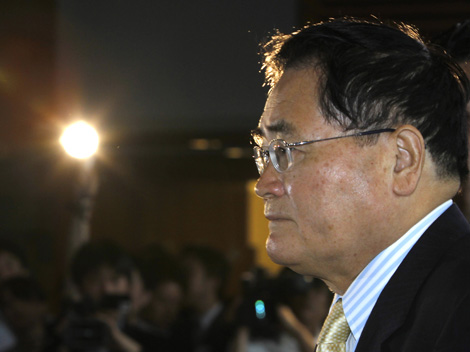Kan’s Kiheitai Minus Kamei
More on:

Kan has quickly nipped in the bud speculation about the role of those who made Yukio Hatoyama’s effort to lead difficult. Right after being elected, Kan spoke out on the appropriate role of Ichiro Ozawa, saying it was time for him to take a rest.
Another headline number from the Yomiuri poll I mentioned yesterday is the 76% of respondents who embraced the Kan Cabinet’s “distancing from Ozawa” – a phrase that the Japanese media has used relentlessly since last week. The controversial former Secretary General of the DPJ, Ichiro Ozawa, has gracefully retreated from the front lines, giving up his party post and modestly declaring himself a “foot soldier” in the grander goal of a rebirth of the DPJ.
So what lies ahead? The Upper House election, of course, if Kan can bring the current Diet session effectively to a close. And therein lies the immediate rub. The DPJ leadership would like to end the parliamentary deliberations on June 16th, as originally scheduled, and head into the Upper House election campaign with this bounce in public support intact. But there is the sticky issue of persuading the other political parties to go along with the idea.
The stickiest problem was not in the opposition, but in fact in the Cabinet. Financial Services and Postal Reform Minister, Shizuka Kamei, head of the People’s National Party, had his heart set on the passage of his Japan Post legislation this session, but with the drama of the Hatoyama resignation and the clock ticking, Secretary General Edano sought to persuade Minister Kamei to wait until the next Diet session in the fall.
Unlike Mr. Ozawa, Mr. Kamei seems uninterested in being a “foot soldier” in the effort to re-elect the DPJ, and has just announced he will step down from his Cabinet post. The People’s National Party will remain in coalition with the DPJ, and its Secretary General Shozaburo Jimi took Kamei’s cabinet slot. Clearly, postal reform will remain on the agenda but it is not Kan’s top priority.
Is this more confusion? Or does it offer the DPJ a clean break? Mr. Kan promised the Japanese public that his party would live up to its promise of rebuilding Japan. Perhaps another of the DPJ’s “lessons learned” is that coalition governments are difficult to manage. The Upper House election is only weeks away, and with a clean slate and a robust number of candidates fielded, the DPJ may not do all that badly. The party is running 105 candidates (of which 60 are for single member districts and 45 are for proportional seats) in order to give it the best shot at getting its much hoped for majority in the Upper House. Prime Minister Kan says he is hoping for 50 seats (54 are currently up for re-election), but the magic number is really 60 seats – the number that would put the DPJ over the top as the majority party in Japan’s 242-seat Upper House.
Naoto Kan has described his new Cabinet as the “kiheitai naikaku” – the Cavalry Cabinet. His “cavalry” are young, smart and committed to public service. Japan’s new prime minister will have to work hard now to win in the July 11 Upper House election, so that he can lead them forward.
More on:
 Online Store
Online Store